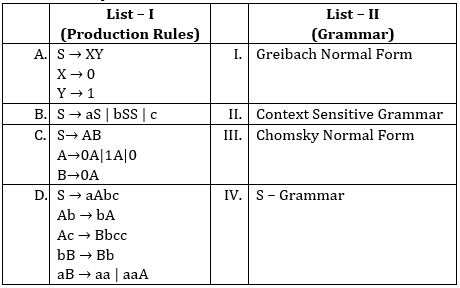Correct option is D
An ambiguous grammar is a context-free grammar for which there exists at least one string that can have more than one parse tree (syntax tree). This means that for such a string, there are multiple valid ways to derive it according to the grammar rules, leading to multiple derivations and parse trees.
·
More than one derivation: Ambiguity implies that there are multiple ways to derive the same string. This includes multiple leftmost and/or rightmost derivations. This is the
true statements.
·
More than one leftmost derivation: Ambiguity means that there can be multiple leftmost derivations for the same string. This is the
true statements.
·
More than one rightmost derivation: This is
true. An ambiguous grammar can have multiple rightmost derivations for the same string.
·
More than one parse tree: This is
true. A parse tree visually represents the derivation of a string according to the grammar rules. If a string has more than one parse tree, it means the string can be derived in multiple ways, leading to ambiguity.
·
More than one syntax tree: This is
true. Syntax trees are essentially another form of parse trees. If there are multiple syntax trees for a single string, it indicates the string can be parsed in multiple ways, showing ambiguity.
An ambiguous grammar is characterized by having multiple derivations, multiple leftmost and rightmost derivations, and multiple parse (or syntax) trees for at least one string in the language. Therefore,
all the statements A, B, C, D, and E are
true for an ambiguous grammar.






 English
English 50 Questions
50 Questions 60 Mins
60 Mins

